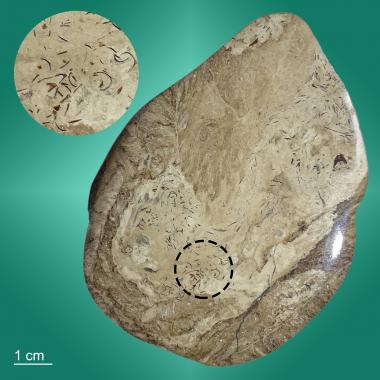
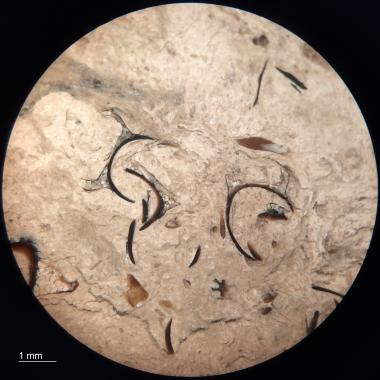
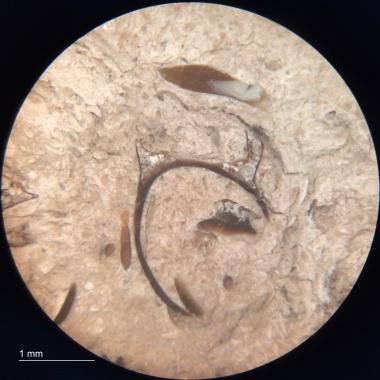
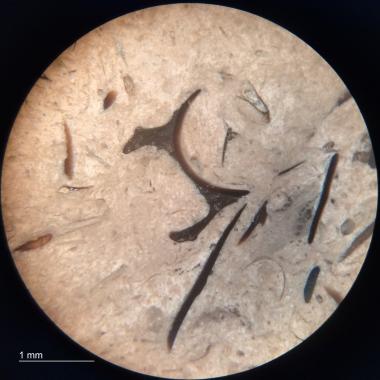
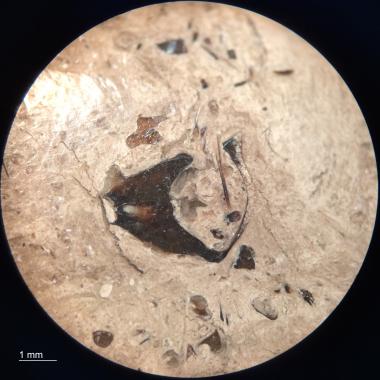
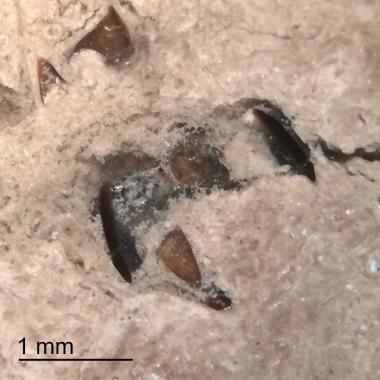
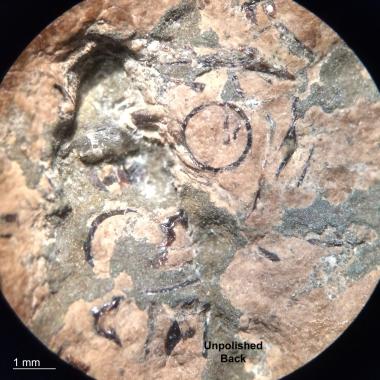
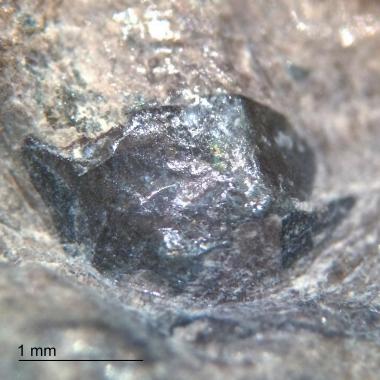
This rather large coprolite has been cut in half and polished. Coprolites of this type are generally attributed to marine reptiles such as ichthyosaurs or plesiosaurs; however, it is impossible to know for sure. In the case of this fossilized fecal specimen, it is even hard to tell exactly what was eaten. It contains numerous ring-shaped inclusions, both whole and fragmented. At first I thought some of the inclusions resembled cephalopod beaks. Now I'm leaning more toward fish remains. Although, unlike most fish vertebrae, these are hollow.
William Buckland discussed inclusions such as these in his 1829 paper On the Discovery of Coprolites, or Fossil Faeces, in the Lias at Lyme Regis, and in other Formations. He thought these rings might be from the suckers of cephalopods, but admitted some small fish found in the formation were about the same size and shape as those found in this type of coprolite.
This specimen is named in honor of the wonderful work of Troy Thompson and his No Evil Project.
